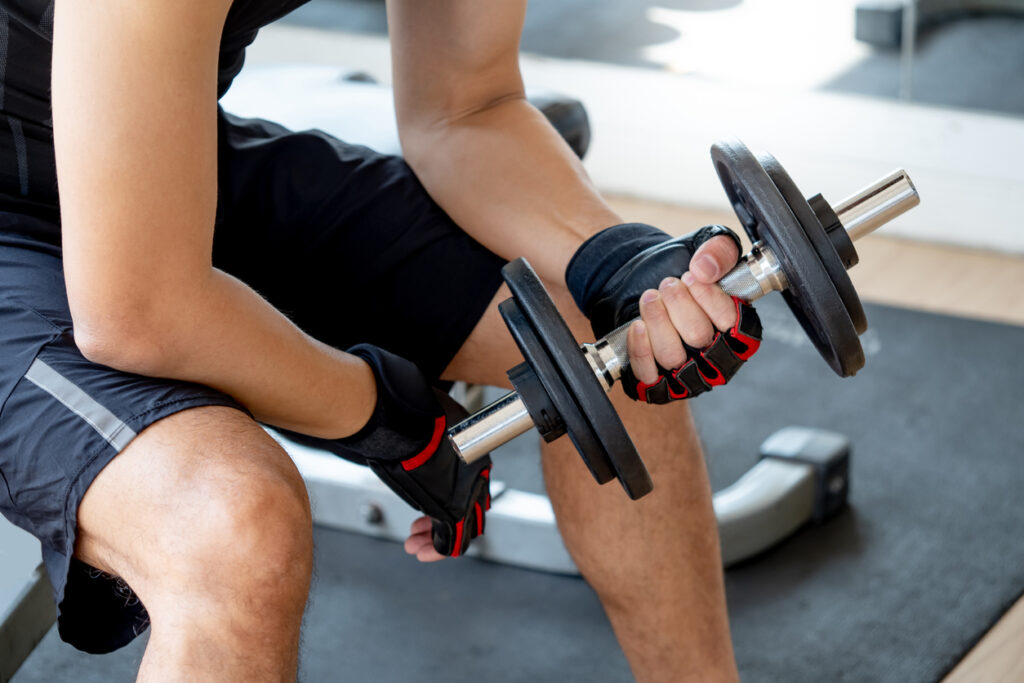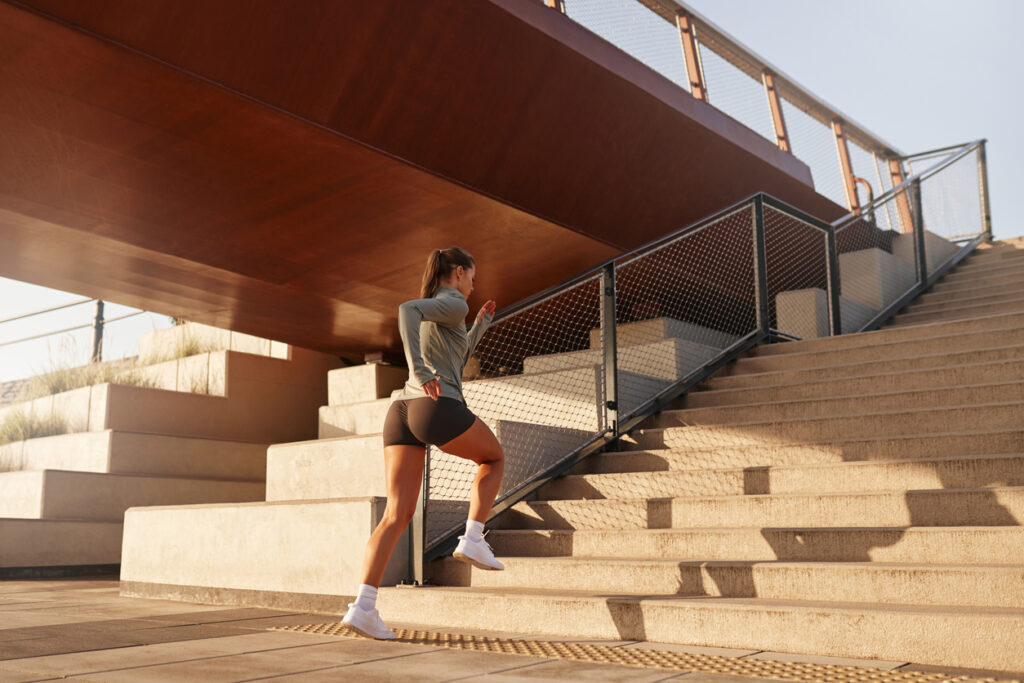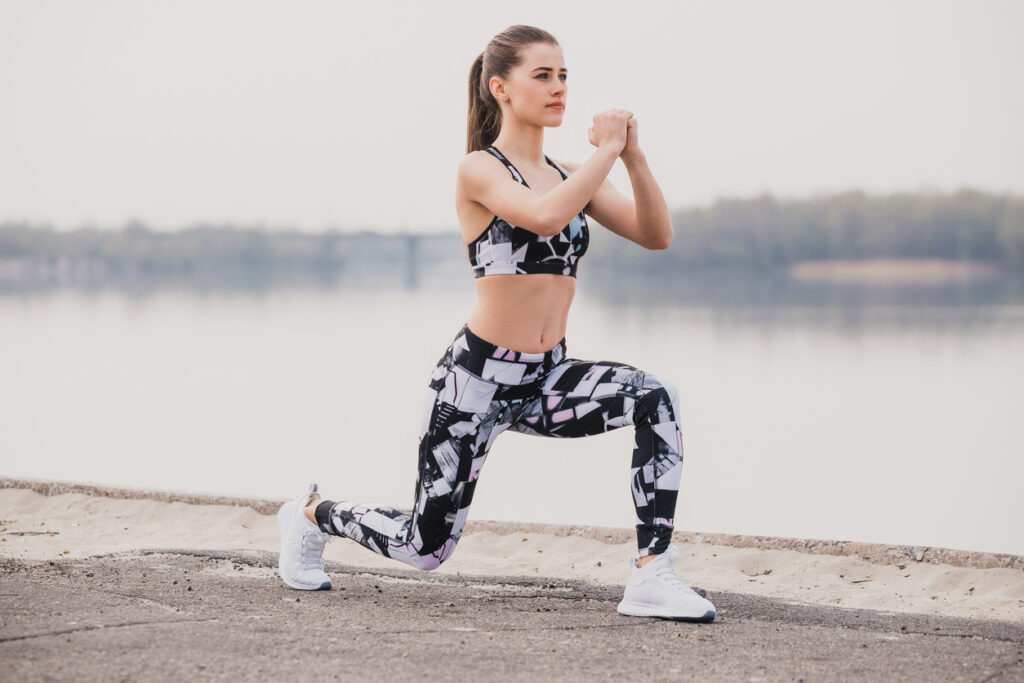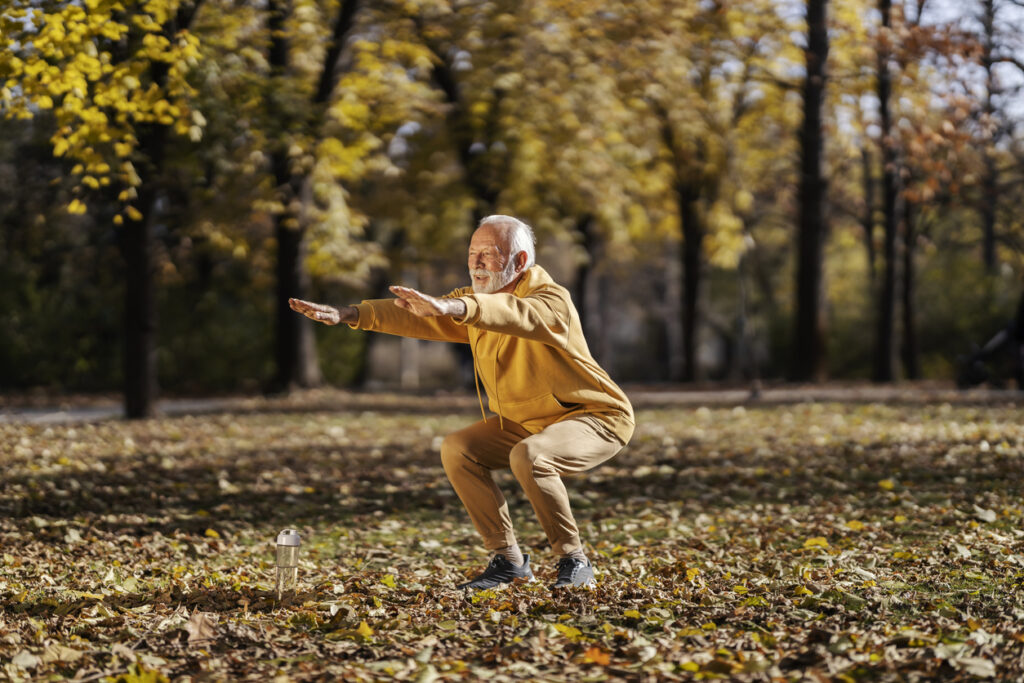1. Find Your Real Step Goal

The 10,000-step rule has been popular for years, but research shows you don’t need that exact number to benefit. Studies suggest that aiming for 6,000 to 8,000 steps daily can be enough to improve heart health, maintain mobility, and reduce the risk of chronic disease, especially for adults over 40. Hitting this range feels more achievable and realistic for busy lifestyles, which means you’re more likely to stick with it. For example, a brisk 20-minute morning walk, an afternoon errand on foot, and a short evening stroll can easily add up to 7,000 steps without overwhelming your schedule. It’s about consistency, not perfection, and lowering the target makes daily walking a healthier habit rather than a stressful chore.
2. Add Ankle or Wrist Weights

Light ankle or wrist weights can make a regular walk much more effective by adding resistance without slowing you down. This extra weight forces your muscles to work harder, especially in the arms, shoulders, and legs, which helps with toning while boosting calorie burn. For instance, wearing one- or two-pound wrist weights while swinging your arms turns every step into a mini strength session. Similarly, ankle weights can target your quads and glutes more intensely, almost like combining walking with strength training. The key is to keep weights light to avoid strain on the joints and gradually build endurance. Even short walks with added weight can improve muscle tone and give your workout an extra edge.
3. Mix in Sprint Intervals

Walking doesn’t always have to mean one steady pace. By mixing in sprint intervals, short bursts of fast walking or light jogging, you can raise your heart rate, burn more calories, and improve cardiovascular fitness. Try walking at a brisk pace for two minutes, then speed up to a near jog for 30 seconds before easing back into recovery mode. Repeat this pattern throughout your walk, and you’ll get a workout that feels more dynamic and challenging without lasting longer. Interval walking is especially effective because it mimics the principles of high-intensity training, but in a lower-impact way. Plus, it keeps the walk more interesting, helping to fight boredom while making your fitness routine more efficient.
4. Carry a Weighted Backpack

Turning your walk into a strength-building workout can be as simple as carrying a weighted backpack. Adding 5 to 10 pounds of weight helps mimic the benefits of resistance training, engaging your back, shoulders, and core while boosting calorie burn. This is a method often used in military-style “rucking,” which is basically walking with a loaded pack. You don’t need anything fancy, just add books or water bottles to your backpack and head out for your usual route. Over time, your endurance and muscle strength improve without needing extra equipment. It’s a simple, practical way to take your daily walks up a notch, especially if you don’t have time for the gym.
5. Walk Hills or Stairs

If you want stronger legs and more calorie burn, add some hills or stairs to your walk. Walking on an incline activates the glutes, calves, and hamstrings more than flat ground, while also elevating your heart rate for a better cardio workout. Even small changes in terrain can make a big difference, think of choosing a hilly neighborhood route or climbing a few flights of stairs during a lunch break. It’s a natural way to build strength and stamina without needing weights or machines. Over time, your body adapts to the challenge, making flat walking feel easier and boosting overall endurance. Inclines also keep your walks from feeling monotonous by adding variety and a fresh challenge.
6. Try Walking Lunges

Adding walking lunges to your routine is a great way to target muscles that regular walking doesn’t hit as hard, like the glutes, thighs, and hips. Every few minutes on your walk, pause and take 10 to 15 lunging steps forward, making sure your front knee stays over your ankle and your back knee lowers toward the ground. You can even mix in side lunges to challenge your inner thighs and improve balance. This small adjustment makes your walk more of a full-body workout and keeps it from becoming too repetitive. Over time, lunges build strength and stability in your legs, making everyday movements like climbing stairs or carrying groceries feel easier.
7. Pump Your Arms

Walking works your legs, but pumping your arms can turn it into a more complete workout. Swinging your arms with intention not only increases your pace but also engages your shoulders, chest, and core. You can exaggerate the movement by bending your elbows at a 90-degree angle and driving them forward and back with energy. Another option is to add light shadow boxing moves, throwing gentle punches in rhythm with your steps. These arm movements raise your heart rate, burn extra calories, and give your upper body some attention without needing extra equipment. It’s a simple way to turn a casual walk into a cardio session that feels more dynamic and powerful.
8. Break Up Your Walks

You don’t need one long walk to reap the benefits, short, brisk walks throughout the day are just as effective. Two or three 10-minute sessions can improve cardiovascular health and help you hit your step goal without feeling pressed for time. For example, a quick morning stroll before work, a walk around the block after lunch, and another in the evening with a loved one adds up to 30 minutes without it feeling like a huge commitment. These smaller walks can be easier to fit into a busy schedule, and they also provide mental breaks that reduce stress. The key is to walk at a pace that gets your heart rate up, even if it’s for a short burst.
9. Use Walking Poles

Walking poles aren’t just for hiking, they can transform a regular walk into a full-body workout. By planting the poles with each step, you engage your arms, shoulders, and core, distributing effort across more muscles. This means you burn more calories and build upper body strength while reducing strain on the knees and hips. Nordic walking, as it’s often called, has been shown to improve posture and balance, making it a great option for older adults as well. Even if you’re walking in your neighborhood or local park, poles can add variety and intensity. It’s an easy way to make your routine more challenging without increasing speed or distance.
10. Walk with Music or Beats

Music can be a powerful motivator during walks, especially if you sync your steps to the rhythm. Upbeat songs naturally encourage you to pick up the pace, helping you sustain a brisk walk without realizing it. For example, matching your stride to tracks with 120 to 130 beats per minute can simulate the feel of power walking or light jogging. Beyond pace, music also makes the walk more enjoyable, distracting you from fatigue and helping time pass quickly. If you prefer a more structured approach, there are playlists and apps designed specifically for walking rhythms. Pairing music with movement can turn an ordinary walk into something that feels energizing and fun.
11. Add a Stretch Circuit

Turning your walk into a mini workout can be as simple as pausing for a stretch or strength break. Every 10 minutes or so, stop and add a few squats, calf raises, or dynamic stretches like leg swings and arm circles. These movements loosen tight muscles, improve flexibility, and prevent stiffness, especially if you sit for long hours during the day. Squats strengthen the lower body, while dynamic stretches keep joints mobile and reduce the risk of injury. Even just a couple of minutes of extra moves sprinkled into your walk can make the session feel more balanced, giving you both cardio and flexibility benefits in one outing.
12. Track Progress

One of the best ways to stay motivated with walking is to track your progress. Using a smartwatch, fitness tracker, or even a free step-counting app helps you see how far you’ve come and where you can improve. Weekly step goals or streaks make it fun and rewarding, turning exercise into a game you can challenge yourself with. For instance, setting a goal to increase your weekly average by 500 steps encourages steady progress without overwhelming pressure. Tracking also helps you notice patterns, like which times of day you’re most active, making it easier to build a routine. Seeing the numbers rise gives a sense of accomplishment that keeps you moving.
This story 10,000 Steps Is Old News, Here Are 12 Ways to Walk Your Way to Real Fitness was first published on Daily FETCH


